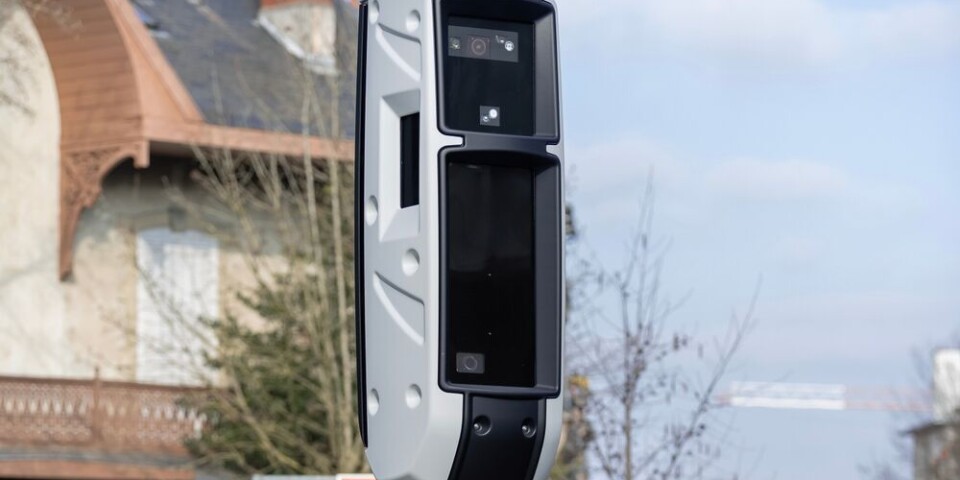-
Photos: Louis XIII-style château near Paris up for auction
The 400-year-old property has 32 hectares of parkland
-
Should France reduce the size of its baguettes to stop waste?
Would you welcome a smaller loaf?
-
Fatal HGV crashes: Goodyear in court in France over tyre defect claims
Investigators allege the firm knew about the problem but did not issue a recall
Vital role of 177 French commandos on D-Day
Most Free French forces did not land in Normandy until after June 6 - but one commando unit performed heroically from day one

For political reasons, the main French forces which fought in the battle of Normandy landed in France after D-Day.
But there was one unit, Kieffer Commando, named after its founder and commanding officer Commander Philippe Kieffer, which went in near Sword Beach on June 6, 1944, the first day of D-Day opeations. It immediately engaged in fierce fighting where it distinguished itself, both on the day and in the subsequent Normandy fighting.
There were 177 French soldiers in the commando unit which landed near Hermanville-sur-Mer, opposite the main D-Day beach at 7.31am, with the mission to attack the Germans in the casino resort of Ouistreham.
They successfully drove the Germans out, and then moved on to reach their target of Amfreville-le-Plein by nightfall. Their exploits were covered in the film The Longest Day, but are hardly known in France.
“Until recently D-Day did not have the same importance in France as it had elsewhere,” historian Benjamin Massieu (right) who has just published a book about French involvement in D-Day – Jour-J in French – told Connexion.
“The Americans in particular, after disputes over French contributions to the Italian invasion, decided to keep French involvement to a minimum, and [US President] Roosevelt was anti-de Gaulle.
“His advisers had persuaded him de Gaulle would never have popular support in France.”
He added: “After the war de Gaulle never celebrated D-Day, preferring to concentrate on other dates like May 8, celebrating the end of the war in Europe in 1945. He said D-Day was special for the Allies, who helped France, to celebrate, and the French should recognise this.”
Official accounts vary, but during the first day’s fighting, eight or 10 of the Kieffer commandos were killed and 31 were injured.
As part of Lord Lovat’s special service brigade, the Kieffer Commando remained fighting in the front lines, fighting their last major action on August 25.
Only 40 of the original 177 remained throughout all 83 days of their combat in Normandy. Another 32 less seriously wounded were treated and returned to the battle.
The commando then moved to fight in the liberation of The Netherlands.
Most of the 3,058 French military who took part in D-Day were on the 12 Free French navy ships, including two cruisers and to destroyers, who provided cover for the troops. There were also 227 airmen, and 12 of them died on June 6.
There were also a number of specialists attached to other units. Rémi Deyfus, now 99, who was a member of the SAS, bilingual in French and English, who landed by glider in the commune of Ranville on the afternoon of June 6.
He is Jewish and joined de Gaulle in London, partly because of the measures taken in France against Jews for the Germans.
Of the original Kieffer Commando three are still alive. Hubert Faure, is now 105 years old and two others, Léon Gautier and Jean Morel, are in their 90s.
In all, French troops represented 2% of the forces engaged that day.
General de Gaulle made his first visit to Normandy on June 14.
British historian Antony Beevor, whose book D-Day, published in 2009, tells that de Gaulle’s entourage arrived with so much luggage for what was meant to be a day trip, that an extra boat had to be found to ferry it to the destroyer taking him over the channel.
When someone remarked that June 14 was the anniversary of the Germans entering Paris in 1940, de Gaulle said: “Well, they made a mistake.”
Stay informed:
Sign up to our free weekly e-newsletter
Subscribe to access all our online articles and receive our printed monthly newspaper The Connexion at your home. News analysis, features and practical help for English-speakers in France
And later after he made a triumphal entry into the town of Bayeux, giving a speech before a huge, cheering crowd, before going on what would now be called a “walkabout” an elderly lady called out "Vivre le Maréchal", a reference to Marshal Pétain, the collaborationist head of state.
De Gaulle quipped: “Another person who does not read the newspapers….”
De Gaulle left senior members of the Free French administration in Bayeux, with all their luggage, and they started re-establishing free-French government administration, much to the discomfort of the Americans who had envisaged US military rule of liberated France.
The French second armoured division led by General Leclerc landed in France in August and went into action on August 11, contributing to Operation Totalize which helped end the battle of Normandy.
It then led the dash for Paris, which led to the German surrender there on August 25, and de Gaulle’s triumphant return to the city and declaration of government.
*Les Français du Jour J by Benjamin Massieu is published by Éditions Pierre de Taillac. €24.90.
























